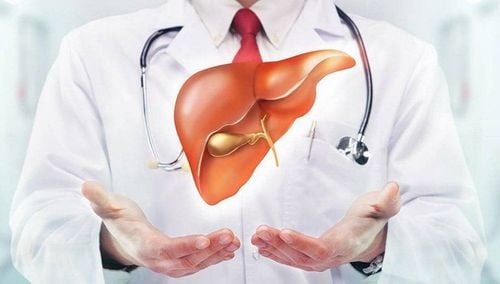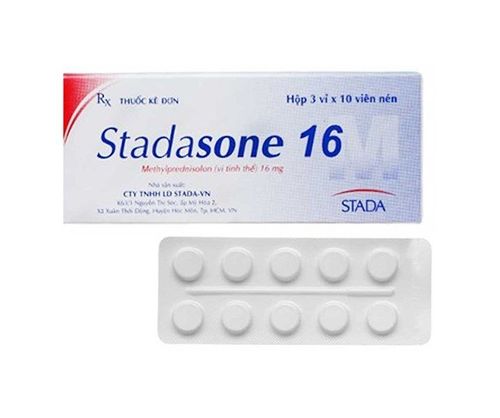This is an automatically translated article.
Each autoimmune disease is characterized by different symptoms and autoantibodies. Understanding the antibodies commonly found in autoimmune disease test results can help patients get an early diagnosis as well as have clearer information about their own disease.
1. What are autoantibodies?
Autoantibodies are antibodies with the nature of immune proteins that mistakenly target and react with the body's own tissues or organs. One or more autoantibodies can be produced by a person's immune system when it cannot distinguish whether the agent is an invading foreign antigen or the body's own tissue.
Normally the immune system can distinguish between foreign substances, or antigens, and the body's own cells. This is the defense barrier that protects the body against foreign invasion by pathogens such as microorganisms. The immune system only reacts to produce antibodies when it senses that the body has been exposed to something like bacteria or a virus. However, when the immune system no longer recognizes one or more normal components of the body, they can produce autoantibodies and react, causing damage or loss of function to tissues and organs. This is the pathogenesis of autoimmune diseases.

Vi sinh vật là tác nhân gây bệnh khiến hệ miễn dịch suy giảm
2. Why form autoantibodies?
The causes of autoimmune diseases are diverse and poorly understood, with many hypotheses being put forward.
Although a direct link has not yet been proven, some have suggested that many cases of autoantibody production are due to a genetic predisposition in interaction with environmental agents from the environment. , such as viral or bacterial infections or long-term exposure to certain toxic chemicals.
Besides, genetic factors also play a central role when many diseases show a high probability of being acquired in certain families and races. However, some situations also suggest that even individual family members can have different autoimmune disorders. In addition, clinical researchers believe that there is a link between the formation of autoantibodies and the hormonal composition. In fact, autoimmune diseases are reported to have a more prominent incidence in women than in men, and that exacerbations occur mainly in women of reproductive age.
3. How do autoantibodies work?
Each type of autoimmune disease occurs and the extent of damage to tissues and organs is dependent on the targeting by the autoantibodies.
Of these, disorders caused by an autoantibody usually mainly affect a single organ. Examples include the thyroid gland in Graves' disease or Hashimoto's thyroiditis, and people with these disorders often have signs and symptoms related to that organ.
However, some other autoantibodies can affect systemic organ systems, making the disease much more difficult to diagnose. The signs and symptoms they cause are relatively non-specific, varied, and can vary widely from individual to individual, most commonly arthritis-type joint pain, fatigue, fever, rash, sensations cold or allergies, weight loss, and muscle weakness. Some people may develop vasculitis or anemia. As the disease progresses, these signs and symptoms will change over time, gradually decreasing, sometimes disappearing completely, but then can suddenly flare up suddenly, especially when other factors are present. promote. Therefore, sometimes the identification of autoimmune diseases is difficult, causing delays in treatment and reducing the long-term prognosis of the disease.

Các tự kháng thể tập trung làm ảnh hưởng ở tại 1 bộ phận
4. Common antibodies in autoimmune disease test results
Because of the difficulties caused by the pathogenesis, when the patient has signs of suspected autoimmune disease, testing for autoimmune diseases is extremely necessary in the positive process of making a diagnosis.
Along with common laboratory tests such as blood tests, ultrasounds, X-rays, CT scans and even histopathological biopsies, autoantibody testing is only effective when selecting only specific for the disease in question. To do this, a clinician, especially an immunologist, needs to be familiar with the antibodies commonly seen in autoimmune disease test results.
One of the most commonly ordered autoantibody detection and quantification tests is the antinuclear antibody (ANA) test. ANA can be positive in a variety of common autoimmune diseases, including systemic lupus erythematosus, Sjogren's syndrome, rheumatoid arthritis, and autoimmune hepatitis. When a patient is ANA positive, other autoantibody tests will, in turn, be used to aid in the diagnosis.
The following are autoantibodies that affect many tissues and organs in the body:
Antinuclear Antibodies (ANA) Anti Double-stranded Antibodies (anti-dsDNA) Antineutrophil Cytoplasmic (ANCA) Anticentromere Antibodies (ACA) Antihistone Antibodies Cyclic Citrullinated Peptide Antibodies (CCP) Extractable nuclear antigen antibodies (eg, anti-SS-A (Ro) and anti-SS-B (La), anti-RNP, anti-Jo-1, anti-Sm, Scl -70) Rheumatoid factor (RF). The following are autoantibodies with organ-specific effects:
Coagulation system:
Cardiolipin antibodies Beta-2 Glycoprotein antibodies 1 Antiphospholipid antibodies (APA) Lupus anticoagulant factor (LA). Endocrine and metabolic systems:
Diabetic autoantibodies in childhood diabetes Thyroid autoantibodies (eg, anti-TPO, TSH receptor antibodies). Gastrointestinal:
Anti-Tissue Transglutaminase (anti-tTG) and anti-Gliadin antibody (AGA) Intrinsic factor antibody Parietal cell antibody. Liver:
Smooth muscle antibodies (SMA) and F-actin antibodies Antimicrobial antibodies (AMA) and AMA M2 Renal microsomal antibodies type 1 (anti-LKM-1). Kidney:
Anti-glomerular membrane (GBM). Skeletal muscle:
Acetylcholine Receptor (AChR). Finally, the results of an autoantibody test must be interpreted carefully and in an objective context depending on the patient's condition. This is because not all people with autoimmune diseases will have detectable autoantibodies in their blood. Similarly, there is a small percentage of the population that is normally tested for autoantibodies even though there are no symptoms at all. Therefore, when the physician will review the patient's results and conclusions, a combination of personal and medical history, environmental factors, and signs and symptoms should be combined before making a diagnosis. ultimately to plan long-term treatment.
Autoantibody testing to detect and quantify circulating blood levels is one of the established factors in the diagnosis of autoimmune diseases. Based on this information, patients should be examined early when there are suspicious signs, perform autoantibody tests and then actively intervene properly from the beginning, limiting damage, loss of life. organ function caused by autoantibodies.
References: emedicine.medscape.com, labtestsonline.org, ncbi.nlm.nih.gov













